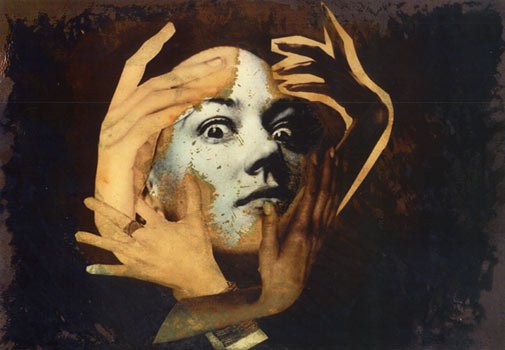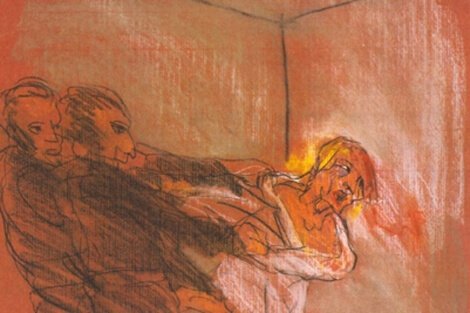Do you Know what Delirium really is?

During the seventeenth century, the concept of madness was based on delusions more than anything else. Therefore, “being crazy” was equal to “having delusions” and vice versa.
Nowadays, if we ask someone to describe their idea of a “madman”, they may say someone who thinks he is Napoleon or who claims to be persecuted by Martians. They have delirium.
In other words, although we have acquired a broader vision of mental problems, delirium continues to be part of the stereotype. Also, it remains one of the diagnostic criteria that most attracts attention.
Etymologically, the word delirium derives from the Latin term “delirare”, which means to leave the furrow that has already been carved. Applied to thought, it would signify something like “thinking outside of the normal groove.”
In layman’s terms, delirium means “to rave, to have disturbed reasoning”. In everyday language, delirium is practically synonymous with madness, unreason, or loss of reality.
“A question that sometimes tortures me is: am I crazy, or are others crazy?”
-Albert Einstein-
The best known definition of delirium is that offered by Jaspers in his General Psychopathology (1975). For Jaspers, delusions are false judgements. They are characterized because the individual holds them with great conviction, so that they are not influenced by experience or evidence that would be irrefutable to most of us. In addition, their beliefs are often impossible.
To identify a delusion, we should take into account the degree to which the experience meets the following points:
- They maintain their beliefs with absolute conviction
- The patient experiences them as self-evident truth, with great personal transcendence
- They will not allow their beliefs to be modified by reason or experience
- The belief is fantastical or at least intrinsically improbable
- Beliefs are not shared by other members of the social or cultural group
- The person is fully preoccupied by the belief and finds it difficult to avoid thinking or talking about it
- The belief is a source of subjective discomfort or interferes with the social functioning of the person
In short, delusions are characterized as being conceptually very complex. Perhaps this is why it is so difficult to define them.

What types of delirium exist?
One of the aspects that researchers have worked hardest on is how to classify delusions. Thus, they have classified them based on the form they acquire and the content they contain.
Types of delusions according to form
From the point of view of form, the distinction that is made divides delusions into primary or “true” delusions and secondary delusions.
Primary delusions
Primary or true delusions do not have their origin in a previous similar experience. That is, their origin cannot be clearly pointed out. They are important because, once they burst into the conscience of the individual, this will explain a good part of everything that has happened to him since the delirium started.
The person is often disturbingly aware that there has been a change in the meaning of his world. Everything seems changed, different. This turn leads to terrible feelings which are difficult to describe and even more difficult to explain. The explanation is usually not understandable to the average person.
“There is no great genius without a touch of madness.”
-Seneca-
Four types of primary delusions have been postulated (Jaspers, 1975):
- Delirious intuition. For example, a patient realizes that an acronym of his name, Emilio Albeniz de Darco, means “you are the murderer of God” in Spanish (Eres el Asesino de Dios).
- Delirious perception. For example, a patient, upon looking at his name written on the mailbox of his house, “realizes” that the secret police have identified him as public enemy number one.
- Delirious atmosphere. This consists of believing that the world has changed in a subtle but sinister, disturbing, and difficult-to-define way.
- Delirious memory. This consists of the delirious reconstruction of a real memory, or when a patient suddenly “remembers” something that is clearly a delusion. For example, if he “remembers” that he is the son of God.
Secondary delusions
Secondary delusions are psychologically understandable. They occur as a result of the patient’s attempt to explain an abnormal experience.
For example, a patient just experienced a hallucination (he says he has heard a very deep voice that spoke to him as if he were his father).
This experience is quite strange and anomalous. Thus, it is very likely that no one will be surprised if the explanation that the patient gives for it is also strange and anomalous. He might say that this voice means that he has been chosen by God to save the world, for example.

Types of delusions according to content
The content of the delusions can be quite varied and there is a wide variety of categories in this type of classification. Here we will collect the most used classifications, as proposed by the DSM.
Delirium of being controlled
The subject believes that their feelings, impulses, thoughts, or actions are not their own. They are the product of some strange and irresistible force. For example, the person feels that they are receiving controlling messages through their television.
Body delusions
This category refers to the functioning of one’s body. For example, the patient may believe that their brain is rotten, or a woman may believe she is pregnant despite clear tests proving she is not, etc.
Delusional jealousy
Patients with this type of delusion are convinced that their partner is unfaithful, in spite of having no evidence of such behavior.
“Any preponderance of fantasy over reason is a degree of madness.”
-Samuel Johnson-
Delusions of greatness
These delusions imply an exaggerated assessment of personal importance, power, knowledge, or identity. It can be of a religious, bodily, or other kind. An example is an individual who believes he is Napoleon Bonaparte.
Delusions of poverty
The subject believes he has lost or will lose all or almost all of his material possessions.
Delirious references
The subject believes that events, objects, or people close to his environment have a particular and unusual sense, usually negative and pejorative. For example, a woman is convinced that radio programs are aimed at her.
Extravagant delusions
A false belief whose content is clearly absurd and without a basis of any real possibility. For example, a man believes that, when his tonsils were removed as a child, he was fitted with a device on his head with wires through which he could hear the voice of the president.

Nihilistic delusions or Cotard Syndrome
This revolves around the existence of the self, of others, and of the world. For example “the world is over”, “I will never have a brain again”, or “I do not need to eat because I am empty”.
Delusions of persecution
The central theme of these delusions is that the subject is attacked, harassed, deceived, persecuted, or the victim of a conspiracy. For example, a patient who believes he is being chased by the FBI.
Delusions of guilt
The patient feels guilty and responsible for all kinds of miseries. For example, he firmly believes that he is responsible for hunger in the world.
Capgras syndrome
The patient believes that important people in his life are being usurped by an imposter, even though they look the same as they always have.
Erotomania or Clerembault syndrome
The patient believes that someone is madly in love with her. For example, a person who firmly believes the prince of Spain is in love with her.
Some interesting cases of delusions
The subject of delusions is quite spectacular and notorious. Due to their striking nature, they don’t often go unnoticed. Thus, there are some cases that have become national news. Here are a few examples:
The case of “Little Nicolas”
The young Francisco Nicolas Gomez Iglesias is on provisional liberty for posing as an advisor to the Government and the National Intelligence Center of Spain (NIC) with the use of false documentation. The forensic medical report, ordered by the judge under instruction number 24 of Madrid, states he has “a florid, delusional idea of greatness.”
The attempted murder of Ronald Reagan
Some believe that John Hinckley Jr.’s attempt to murder Ronald Reagan was due to an erotomaniac illusion or delusion of love. Hinckley believed that the death of the president would cause the actress Jodie Foster to publicly declare her love for Hinckley.
The world of cinema also reflects delusions, which appear in a multitude of films. Here are two of them:
Take Shelter (2011)
In this film, a normal father begins to give in to the fear of a possible apocalypse without any rational explanation for this fear.

The Witch (2015)
This film narrates the life of a North American family of settlers who moved to an isolated settlement in the forest to start a new life. The clash between the presence of a witch near the settlement and the strong religious faith of the family gradually gives rise to delusions.
As we have seen throughout this article, delirium is a complex mental construction that can encompass several shared characteristics. On the other hand, delusions demonstrate the creative power of our mind and its need to give coherence to the reality it perceives. Many delusions are the most plausible explanations that a person can find for their hallucinations.
Bibliography
Belloch, A., Sandín, B. y Ramos, F. (Eds.) (2008). Manual de psicopatología (2 vols.), edición revisada. Madrid. McGraw-Hill.
American Psychiatric Association (2014). DSM-5. Manual diagnóstico y estadístico de los trastornos mentales. Editorial Médica Panamericana.
This text is provided for informational purposes only and does not replace consultation with a professional. If in doubt, consult your specialist.








